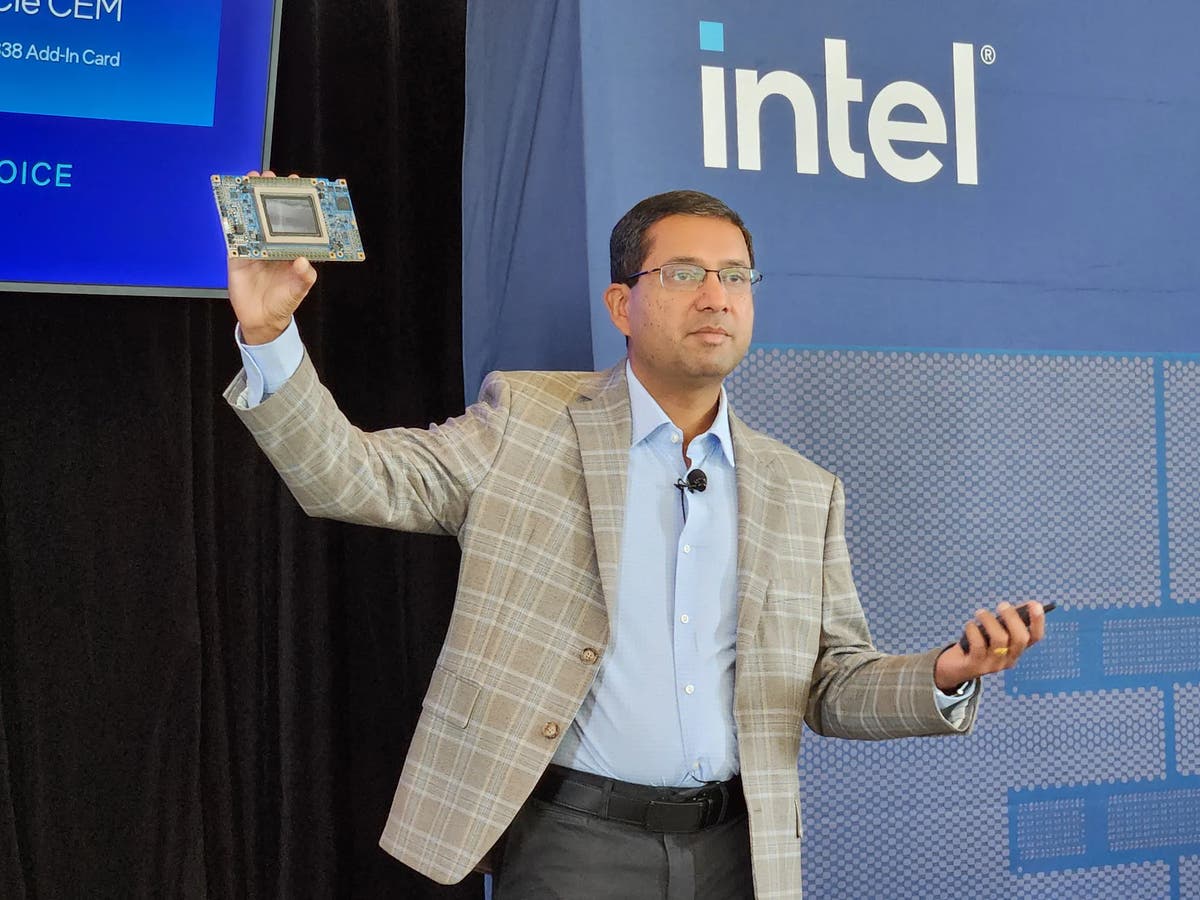The move comes as AMD races ahead of Intel in its challenge to AI infrastructure giant Nvidia with a data center AI strategy that has allowed it to land OpenAI as a major customer and receive growing interest from other marquee tech companies.

Intel is losing a data center AI executive who previously helped lead the company’s Gaudi accelerator chip efforts and is now headed for a job at AMD, CRN has learned.
Saurabh Kulkarni, vice president of data center AI product management at Intel, recently announced his plan to depart the chipmaker, with Friday set as his last day, according to multiple sources familiar with the move.
[Related: Analysis: AMD Puts Channel Pressure On Intel As Both Firms Revamp Partner Programs]
In a Thursday statement to CRN, an Intel spokesperson confirmed Kulkarni’s upcoming departure and said that Anil Nanduri, vice president of AI go-to-market, “will assume leadership of the AI product management organization.”
“We thank Saurabh for his contributions and wish him well,” the representative said, adding that “the team remains focused on execution and delivering for customers.”
Sources said that Kulkarni (pictured last year), who spent a little more than two years at Intel, is leaving to join AMD, but CRN could not confirm his new job at the rival company.
AMD declined to comment.
Kulkarni To Join AMD As It Ramps Up Rivalry With Nvidia
The move is happening as AMD races ahead of Intel in its challenge to AI infrastructure giant Nvidia with a data center strategy that has allowed it to land OpenAI as a major customer and receive growing interest from other marquee tech companies. This has given AMD CEO Lisa Su the confidence to say on Tuesday that the company is “on track” to generate tens of billions in annual revenue in 2027 from its Instinct GPU business.
Intel, on the other hand, recently retooled its data center AI strategy under Lip-Bu Tan, who became its CEO in March, after the chipmaker failed to meet the modest, $500 million revenue expectation it set for its Gaudi chips last year.
Last month at the 2025 OCP Global Summit, the company revealed a 160-GB, energy-efficient data center GPU that is part of a new annual GPU release cadence to deliver on its new strategy of providing open systems and software architecture for AI systems.
Kulkarni will join other technical leaders, including Ronak Singhal and Rob Bruckner, who have left Intel this year as Tan brings in executives from the outside for key AI and data center leadership positions and makes engineer recruitment and retention a top priority.
Among the new leaders are Jean-Didier Allegrucci, a former longtime chip designer at Apple who was named vice president of AI system-on-chip engineering; and Shailendra Desai, another former Apple chip designer who was hired as vice president of AI fabric and networking.
Tan is pushing for Intel to become what he has called an “engineering-focused company” as part of his turnaround plan that has involved strategic shifts and a major restructuring that resulted in the chipmaker laying off 15 percent of its core workforce.
“Empowering engineers across the company, while also attracting new talent from the outside to join us, is core to our future success—and I want to thank all of our engineering teams for the work you are doing to create great products and delight our customers,” Tan wrote in a memo to employees when he announced Bruckner’s departure.
Kulkarni’s Responsibilities At Intel And Job History
Kulkarni had been in charge of the AI systems and GPU product management team under Sachin Katti, who Tan appointed in April to lead Intel’s AI strategy as chief technology and AI officer, according to a memo Katti sent to employees at the time.
According to his LinkedIn profile, Kulkarni led “cross-functional product management across systems, software and silicon design,” aligning the business unit to “accelerate data center AI product road map executive.” He also helped drive Intel’s “silicon photonics strategy for GPU interconnect to improve scalability and performance for next-generation data center-scale systems,” Kulkarni wrote on his LinkedIn profile.
Kulkarni held the product management leadership title since July of last year. His previous title was vice president of AI systems design, for which he “defined and drove Intel’s AI systems strategy for the data center product portfolio,” per LinkedIn. He also “championed the rack-scale systems initiative” for Intel’s data center AI strategy.
Prior to joining Intel in 2023, Kulkarni was chief product officer at Lucata, a computing software platform provider that no longer has an active website, and general manager of North America at Graphcore, an AI chip designer that was acquired by Japanese investment giant SoftBank Group last year after struggling to compete with Nvidia.
Earlier in his career, Kulkarni spent six years at Microsoft as the director of engineering for cloud and AI system technologies and principal program manager for Azure compute. Before then, he was at Intel for 13 years, first as a senior design engineer in the CPU Design Group and then as a senior hardware architect and security researcher.
